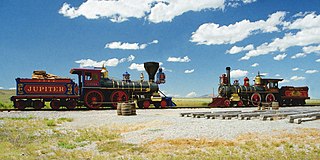
Golden Spike National Historical Park is a United States National Historical Park located at Promontory Summit, north of the Great Salt Lake in east-central Box Elder County, Utah, United States. The nearest city is Corinne, approximately 23 miles (37 km) east-southeast of the site.
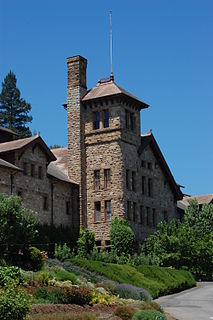
The Culinary Institute of America at Greystone is a branch campus of the private culinary college the Culinary Institute of America. The Greystone campus, located on State Route 29/128 in St. Helena, California, offers associate degrees and two certificate programs in culinary arts and baking and pastry arts. The CIA at Greystone and the Culinary Institute of America at Copia make up the school's California branch.
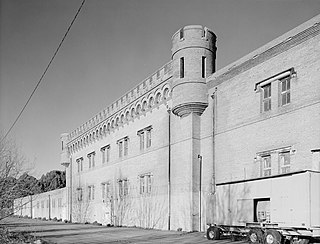
Winehaven was a winery and town in Richmond, California, that held the title of "world's largest winery" for 12 years (1907–1919). It later became a fuel depot for the United States Navy.
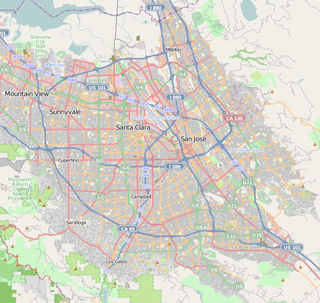
The Picchetti Winery, also known as the Picchetti Ranch, is a winery located at 13100 Montebello Rd., Cupertino, California in the Picchetti Ranch Open Space Preserve. The Picchetti brothers, Secondo and Vincenzo, for whom the ranch was named, were among the earliest settlers to plant grapes on this ridge, which they named "Monte Bello" or "beautiful mountain." This ridge was later to become one of Santa Clara County's important vineyard areas.

The Mountain Winery, formerly the Paul Masson Mountain Winery, is a winery in Saratoga, California, United States, North America. It was founded by Paul Masson, a pioneer of the California wine industry. The winery became famous for its slogan, voiced by Orson Welles in television commercials: "We will sell no wine before its time."

Bryce Canyon Lodge is a lodging facility in Bryce Canyon National Park, Utah, United States, built between 1924 and 1925 using local materials. Designed by architect Gilbert Stanley Underwood, the lodge is an excellent example of National Park Service rustic design, and the only remaining completely original structure that Underwood designed for Bryce Canyon National Park, Zion National Park, and the North Rim of the Grand Canyon.

Benjamin Church House is a Colonial Revival house at 1014 Hope Street in Bristol, Rhode Island, U.S.A. It opened in 1909 as the "Benjamin Church Home for Aged Men" as stipulated by Benjamin Church's will. Beginning in 1934, during the Great Depression, it admitted women. The house was closed in 1968 and became a National Register of Historic Places listing in 1971. The non-profit Benjamin Church Senior Center was incorporated in June 1972 and opened on September 1, 1972. It continues to operate as a senior center.
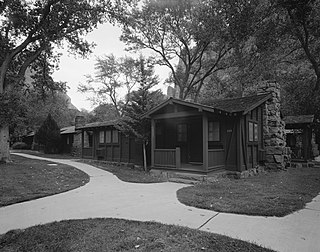
The Zion Lodge Historic District surrounds the rustic lodge originally designed by Gilbert Stanley Underwood in Zion National Park. The lodge served as the center of a group of cabins, employee dormitories and support buildings which are included in the district. A swimming pool and bathhouse were demolished in 1976. The district was expanded in 1986 to include an Underwood-designed former photography studio and additional cabins.

The Beaver County Courthouse is a historic building in Beaver, Utah, United States, that is listed on the National Register of Historic Places (NRHP).

The Devereaux House in Salt Lake City, Utah, United States, also known as the Staines-Jennings Mansion, was built in 1857 for William Staines. It was designed by William Paul. The house was expanded by William Jennings, mayor of Salt Lake City from 1882 to 1885, again using Paul as the architect. Devereaux was a social center for the Salt Lake City area, hosting distinguished visitors. Brigham Young's son Joseph Angell Young owned the house for a short time.

Corinne Methodist Episcopal Church is a historic church at the corner of Colorado and S. 600 Streets in Corinne, Utah. It was one of the first churches in Corrinne, a town established by non-Mormons in the overwhelmingly Mormon Utah Territory, and is therefore one of the first Methodist churches in Utah. The church was completed in 1870, and was part of efforts by main-line Protestants to convert Mormons.

Gold Seal Winery is a historic winery complex located near Hammondsport in Steuben County, New York. The primary building on the complex is in the Italianate style and constructed in 1865. It is a three-story, 54 feet by 110 feet, stone structure built into a hillside. It features a bell tower, gable roof with dormers, stuccoed upper stories, and barrel vaults. The original building was enlarged on at least six occasions. A long, narrow stone addition was built in 1890 and expanded in 1903-1903 with a mansard roof in the Second Empire style. Another major addition was built in 1884 and expanded in 1887. It included a champagne fluting room, an additional storage vault, and tasting porch. A 54 feet by 109 feet addition of reinforced concrete was built in 1912. Other contributing buildings are the Pornace House (1909) and brandy distillery (1865).

The Houppert Winery Complex, now the Lawton Heritage Community Center, is a complex of buildings constructed as a winery and located at 646 North Nursery in Lawton, Michigan. It was designated a Michigan State Historic Site in 1997 and listed on the National Register of Historic Places in 2000.
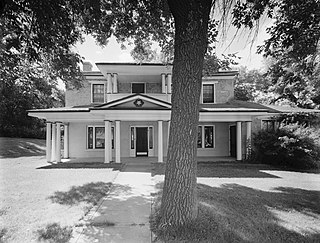
The Hampton's Ford Stage Stop and Barn is a historic district in northeastern Box Elder, Utah, United States, that is listed on the National Register of Historic Places.

The Stairs Station Hydroelectric Power Plant was built in 1894-1895 in Big Cottonwood Canyon, about 8 miles (13 km) southeast of Salt Lake City, Utah. The plant comprises the powerhouse, switchyard, penstocks, and a pipeline. A dam next to the site is associated with the Granite Power Plant farther downstream, and is part of neither historic district. The powerhouse is the only remaining building associated with the plant. It is an example of an intact high-head generating plant from the late 19th century.

The Nelson Wheeler Whipple House is an adobe house in Salt Lake City, Utah, United States built in 1854. Whipple was born in Sanford, New York in 1818, converting to Mormonism in 1844 and moving to Nauvoo, Illinois. After fleeing Nauvoo in 1846, Whipple lived in Garden Grove, Iowa until 1850, when he and his family moved to Salt Lake City. There he acquired two more wives and 17 children, providing wood shingles for the Mormon Tabernacle and keeping a diary that has become an important historical resource.

The Miles Goodyear Cabin is a historic building in Ogden, Utah, built by trapper and trader Miles Goodyear on the Weber River in 1845, and is the first permanent European settlement in Weber County, Utah. It is the oldest building in the state of Utah not built by Native Americans. The cabin is constructed of sawn cottonwood logs, measuring roughly 14.33 feet (4.37 m) by 17.75 feet (5.41 m).

Western New York Wine Company, also known as the Philip Argus House and Winery, is a historic winery located at Pulteney, Steuben County, New York. The main building consists of a home and winery building built in 1886 and 1890, respectively. The buildings were connected in the 1970s. It is a two-story, "L"-shaped, fieldstone dwelling with an attached three-story, fieldstone winery. Both elements have cross-gable roofs. Also on the property is a contributing English barn built about 1880. The winery remains in operation as Chateau Frank.
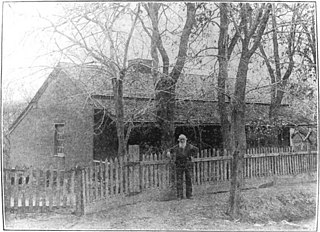
The John Steele House is the historic home of a prominent early resident of Toquerville, Utah. One of the Mormon pioneers, John Steele built the house in 1862 and lived there until his death in 1903, working as an herbal physician and serving in a number of town and county offices. Its floor plan is a rare double-parlor style.

The Thomas Forsyth House is the historic home of an early settler of Toquerville, Utah. One of the Mormon pioneers, Thomas Forsyth built the house circa 1868 and lived there until his death in 1898. He operated mills, dried fruit and stocked the cellar with wine he made himself, while his wife Mary Browett Holmes ran a glove shop. The simple 1½-story fieldstone construction, a hall-and-parlor house extended with a lean-to, is representative of the pioneer period.






















